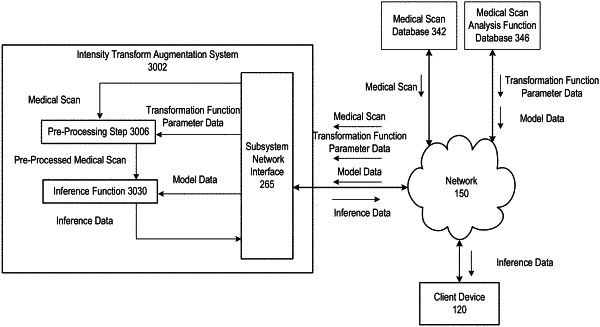| CPC G06Q 10/06315 (2013.01) [A61B 5/7264 (2013.01); G06F 3/0482 (2013.01); G06F 3/0484 (2013.01); G06F 9/542 (2013.01); G06F 16/245 (2019.01); G06F 18/214 (2023.01); G06F 18/217 (2023.01); G06F 18/2115 (2023.01); G06F 18/2415 (2023.01); G06F 18/41 (2023.01); G06F 21/6254 (2013.01); G06N 5/04 (2013.01); G06N 5/045 (2013.01); G06N 20/00 (2019.01); G06N 20/20 (2019.01); G06Q 20/14 (2013.01); G06T 3/40 (2013.01); G06T 5/002 (2013.01); G06T 5/008 (2013.01); G06T 5/50 (2013.01); G06T 7/0012 (2013.01); G06T 7/0014 (2013.01); G06T 7/10 (2017.01); G06T 7/11 (2017.01); G06T 7/187 (2017.01); G06T 7/44 (2017.01); G06T 7/97 (2017.01); G06T 11/001 (2013.01); G06T 11/006 (2013.01); G06T 11/206 (2013.01); G06V 10/225 (2022.01); G06V 10/25 (2022.01); G06V 10/764 (2022.01); G06V 10/82 (2022.01); G06V 30/19173 (2022.01); G06V 40/171 (2022.01); G16H 10/20 (2018.01); G16H 10/60 (2018.01); G16H 15/00 (2018.01); G16H 30/20 (2018.01); G16H 30/40 (2018.01); G16H 40/20 (2018.01); G16H 50/20 (2018.01); H04L 67/01 (2022.05); H04L 67/12 (2013.01); A61B 5/055 (2013.01); A61B 6/032 (2013.01); A61B 6/5217 (2013.01); A61B 8/4416 (2013.01); G06F 18/2111 (2023.01); G06F 18/24 (2023.01); G06F 40/295 (2020.01); G06Q 50/22 (2013.01); G06T 7/70 (2017.01); G06T 2200/24 (2013.01); G06T 2207/10048 (2013.01); G06T 2207/10081 (2013.01); G06T 2207/10088 (2013.01); G06T 2207/10116 (2013.01); G06T 2207/10132 (2013.01); G06T 2207/20076 (2013.01); G06T 2207/20081 (2013.01); G06T 2207/20084 (2013.01); G06T 2207/30004 (2013.01); G06T 2207/30008 (2013.01); G06T 2207/30016 (2013.01); G06T 2207/30061 (2013.01); G06V 30/194 (2022.01); G06V 2201/03 (2022.01); G16H 50/30 (2018.01); G16H 50/70 (2018.01)] | 20 Claims |

|
1. A method comprising:
generating first contrast significance data for a first computer vision model, wherein the first computer vision model was generated from a first training set of medical scans;
identifying first significant contrast parameters based on the first contrast significance data;
generating a first re-contrasted training set based on performing a first intensity transformation function on the first training set of medical scans, wherein the first intensity transformation function utilizes the first significant contrast parameters;
generating a first re-trained model from the first re-contrasted training set, which is associated with corresponding output labels based on abnormality data for the first training set of medical scans;
generating re-contrasted image data of a new medical scan based on performing the first intensity transformation function;
generating inference data indicating at least one abnormality detected in the new medical scan based on utilizing the first re-trained model on the re-contrasted image data; and
transmitting the inference data for display.
|